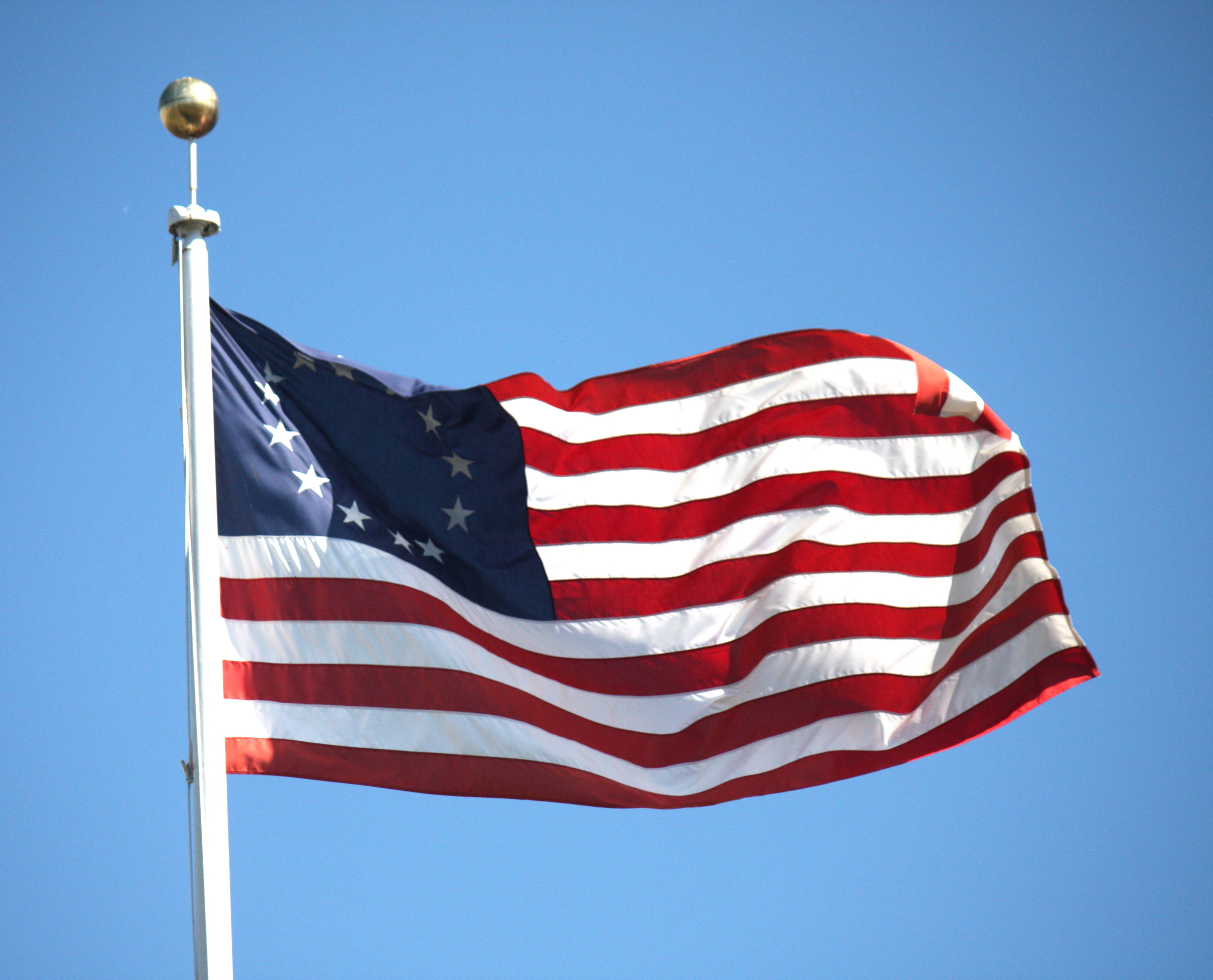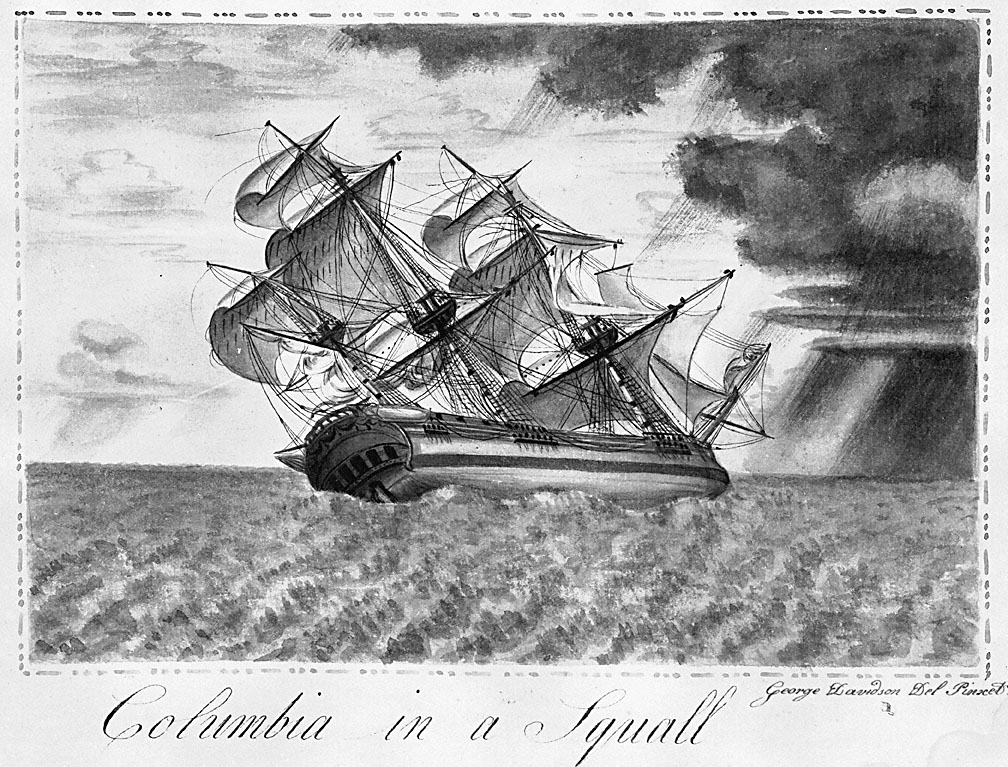|
Union (sloop)
''Union'' was an American sloop built in Somerset, Massachusetts in 1792. It is best known for its circumnavigation of the world, 1794–1796, under the maritime fur trader John Boit. The sloop ''Union'' was 94 tons burthen, length overall, beam, and depth. She had a crew of 22, one deck, one mast, and a fore-and-aft rig. Her armament was 10 carriage guns, which were a mix of 6-pounders and 3-pounders, and 8 swivel guns mounted on the rails. ''Union'' was built in 1792 and registered on 8 July 1793. Her original owners were William Burroughs (merchant), John Nicolas (trader), Benjamin Hicks (mariner), and John Finch. She was re-registered on 26 August 1794 under the new owners Caleb Garner (merchant of Newport, Rhode Island), Crowell Hatch and Peter Brooks (merchants of Boston), and master John Boit. After Boit's voyage ''Union'' was sold on 22 July 1796, in Boston. John Boit had served as fifth mate on the second voyage of the ''Columbia Rediviva'' under Captain Robert G ... [...More Info...] [...Related Items...] OR: [Wikipedia] [Google] [Baidu] |
Betsy Ross Flag
The Betsy Ross flag is a reconstructed early design for the flag of the United States, which is conformant to the Flag Act of 1777 and has red stripes outermost and stars arranged in a circle. These details elaborate on the 1777 act, passed early in the American Revolutionary War, which specified 13 alternating red and white horizontal stripes and 13 white stars in a blue canton. Its name stems from the story, once widely believed, that shortly after the 1777 act, upholsterer and flag maker Betsy Ross produced a flag of this design. Betsy Ross story Betsy Ross (1752–1836) was an upholsterer in Philadelphia who produced uniforms, tents, and flags for Continental forces. Although her manufacturing contributions are documented, a popular story evolved in which Ross was hired by a group of Founding Fathers to make a new U.S. flag. According to the legend, she deviated from the 6-pointed stars in the design and produced a flag with 5-pointed stars, instead. The claim by h ... [...More Info...] [...Related Items...] OR: [Wikipedia] [Google] [Baidu] |
Columbia Rediviva
''Columbia Rediviva'' (commonly known as ''Columbia'') was a privately owned American ship under the command, first, of John Kendrick, and later Captain Robert Gray, best known for going to the Pacific Northwest for the maritime fur trade. "Rediviva" (''Latin'' "revived") was added to her name upon a rebuilding in 1787. Since ''Columbia'' was privately owned, she did not carry the prefix designation " USS". History Early authorities claim the ship was built in 1773 by James Briggs at Hobart's Landing on North River, in Norwell, Massachusetts and named ''Columbia''. Later historians say she was built in Plymouth, Massachusetts in 1787. In 1790 she became the first American ship to circumnavigate the globe. During the first part of this voyage, she was accompanied by ''Lady Washington'' which served as tender for ''Columbia''. In 1792 Captain Gray entered the Columbia River and named it after the ship. The river and its basin, in turn, lent its name to the surrounding ... [...More Info...] [...Related Items...] OR: [Wikipedia] [Google] [Baidu] |
Sea Otter
The sea otter (''Enhydra lutris'') is a marine mammal native to the coasts of the northern and eastern North Pacific Ocean. Adult sea otters typically weigh between , making them the heaviest members of the weasel family, but among the smallest marine mammals. Unlike most marine mammals, the sea otter's primary form of insulation is an exceptionally thick coat of fur, the densest in the animal kingdom. Although it can walk on land, the sea otter is capable of living exclusively in the ocean. The sea otter inhabits nearshore environments, where it dives to the sea floor to forage. It preys mostly on marine invertebrates such as sea urchins, various mollusks and crustaceans, and some species of fish. Its foraging and eating habits are noteworthy in several respects. Its use of rocks to dislodge prey and to open shells makes it one of the few mammal species to use tools. In most of its range, it is a keystone species, controlling sea urchin populations which would otherwis ... [...More Info...] [...Related Items...] OR: [Wikipedia] [Google] [Baidu] |
Brooks Peninsula
''Parts of this article have been adapted from thBC Parks website'' Mquqʷin/Brooks Peninsula Provincial Park is a provincial park located on the west coast of Vancouver Island in British Columbia, Canada. History As a result of land-use planning for Vancouver Island, this former 28,780 hectare (71,117 acre) recreation area (established in 1986) was upgraded in 1995 to a Class 'A' Provincial Park. In addition to this upgrade, 22,851 hectares (56,466 acres) known as the Brooks-Nasparti area, has been added to the park. On July 13, 2009, the park was renamed Brooks Peninsula Provincial Park (a.k.a. Mquqʷin) and, in 2018, Mquqʷin/Brooks Peninsula Provincial Park under the guidance of the Che:k'tles7et'h' peoples. Geography The park is 51,631 hectares (127,583 acres) in size. Brooks Peninsula is located about 20 kilometres (12 mi) southwest of Port Alice, British Columbia. Access to the park is by boat or float plane. Brooks Peninsula j ... [...More Info...] [...Related Items...] OR: [Wikipedia] [Google] [Baidu] |
Vancouver Island
Vancouver Island is an island in the northeastern Pacific Ocean and part of the Canadian province of British Columbia. The island is in length, in width at its widest point, and in total area, while are of land. The island is the largest by area and the most populous along the west coasts of the Americas. The southern part of Vancouver Island and some of the nearby Gulf Islands are the only parts of British Columbia or Western Canada to lie south of the 49th parallel. This area has one of the warmest climates in Canada, and since the mid-1990s has been mild enough in a few areas to grow Mediterranean crops such as olives and lemons. The population of Vancouver Island was 864,864 as of 2021. Nearly half of that population (~400,000) live in the metropolitan area of Greater Victoria, the capital city of British Columbia. Other notable cities and towns on Vancouver Island include Nanaimo, Port Alberni, Parksville, Courtenay, and Campbell River. Vancouver Island is th ... [...More Info...] [...Related Items...] OR: [Wikipedia] [Google] [Baidu] |
Checleset Bay
, image = Big Bunsby Marine Park,.jpg , image_size = 260px , alt = , caption = Big Bunsby Marine Provincial Park in Checleset Bay , image_bathymetry = , alt_bathymetry = , caption_bathymetry = , location = Vancouver Island, British Columbia , group = , coordinates = , type = Bay , etymology = , part_of = , inflow = , rivers = , outflow = , oceans = Pacific Ocean , catchment = , basin_countries = , agency = , designation = , date-built = , engineer = , date-flooded = , length = , width = , area = , depth = , max-depth = , volume = , residence_time = , salinity = , shore = , elevation = , tempera ... [...More Info...] [...Related Items...] OR: [Wikipedia] [Google] [Baidu] |
Cape Horn
Cape Horn ( es, Cabo de Hornos, ) is the southernmost headland of the Tierra del Fuego archipelago of southern Chile, and is located on the small Hornos Island. Although not the most southerly point of South America (which are the Diego Ramírez Islands), Cape Horn marks the northern boundary of the Drake Passage and marks where the Atlantic and Pacific Oceans meet. Cape Horn was identified by mariners and first rounded in 1616 by the Dutchman Willem Schouten and Jacob Le Maire, who named it after the city of Hoorn in the Netherlands. For decades, Cape Horn was a major milestone on the clipper route, by which sailing ships carried trade around the world. The waters around Cape Horn are particularly hazardous, owing to strong winds, large waves, strong currents and icebergs. The need for boats and ships to round Cape Horn was greatly reduced by the opening of the Panama Canal in August 1914. Sailing around Cape Horn is still widely regarded as one of the major challeng ... [...More Info...] [...Related Items...] OR: [Wikipedia] [Google] [Baidu] |
Falkland Islands
The Falkland Islands (; es, Islas Malvinas, link=no ) is an archipelago in the South Atlantic Ocean on the Patagonian Shelf. The principal islands are about east of South America's southern Patagonian coast and about from Cape Dubouzet at the northern tip of the Antarctic Peninsula, at a latitude of about 52°S. The archipelago, with an area of , comprises East Falkland, West Falkland, and 776 smaller islands. As a British overseas territory, the Falklands have internal self-governance, but the United Kingdom takes responsibility for their defence and foreign affairs. The capital and largest settlement is Stanley on East Falkland. Controversy exists over the Falklands' discovery and subsequent colonisation by Europeans. At various times, the islands have had French, British, Spanish, and Argentine settlements. Britain reasserted its rule in 1833, but Argentina maintains its claim to the islands. In April 1982, Argentine military forces invaded the islands. Brit ... [...More Info...] [...Related Items...] OR: [Wikipedia] [Google] [Baidu] |
Cape Verde
, national_anthem = () , official_languages = Portuguese , national_languages = Cape Verdean Creole , capital = Praia , coordinates = , largest_city = capital , demonym = Cape Verdean or Cabo Verdean , ethnic_groups_year = 2017 , government_type = Unitary semi-presidential republic , leader_title1 = President , leader_name1 = José Maria Neves , leader_title2 = Prime Minister , leader_name2 = Ulisses Correia e Silva , legislature = National Assembly , area_rank = 166th , area_km2 = 4033 , area_sq_mi = 1,557 , percent_water = negligible , population_census = 561,901 , population_census_rank = 172nd , population_census_year = 2021 , population_density_km2 = 123.7 , population_density_sq_mi = 325.0 , population_density_rank = 89th , GDP_PPP ... [...More Info...] [...Related Items...] OR: [Wikipedia] [Google] [Baidu] |
The Limestone Press
The Limestone Press is a one-man publishing house, established in 1972 by historian Richard Pierce (1918–2004). Pierce lived and worked at that time in Kingston, Ontario, and he chose the name from the nickname of Kingston, the “Limestone City”, which has its origins in its many limestone buildings. He published mainly books on Alaska’s history, mostly concerning its Russian era, but also on Ukrainian and African and other topics, as well as books dealing with Kingston's history. It is unclear whether The Limestone Press will publish any new works, since Pierce died in 2004. The remaining back catalogue is being distributed by the University of Alaska Press. The Alaska History Series *Note: The name of the series was originally ''Materials for the Study of Alaska History'', under which name it appeared from 1972 to 1980. This covers numbers 1–17. The new name ''Alaska History'' begins with no. 18. From 1993 on the series has been distributed solely by the University ... [...More Info...] [...Related Items...] OR: [Wikipedia] [Google] [Baidu] |
John Kendrick (American Sea Captain)
John Kendrick (1740–1794) was an American sea captain during the American Revolutionary War, and was involved in the exploration and maritime fur trading of the Pacific Northwest alongside his subordinate Robert Gray. He was the leader of the first US expedition to the Pacific Northwest. He is known for his role in the 1789 Nootka Crisis, having been present at Nootka Sound when the Spanish naval officer José Esteban Martínez seized several British ships belonging to a commercial enterprise owned by a partnership of companies under John Meares and Richard Cadman Etches. This incident nearly led to war between Britain and Spain and became the subject of lengthy investigations and diplomatic inquiries. Kendrick was the first American to try to open trade with Japan. He began the Hawaiian sandalwood trade. He was killed during an exchange of cannon salutes with the ship Jackal when one of the cannons was loaded, purportedly by accident. John Kendrick was instrumental in ... [...More Info...] [...Related Items...] OR: [Wikipedia] [Google] [Baidu] |




